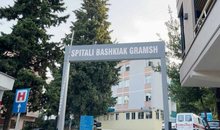
 Flash News
Flash News
Mass poisoning in Gramsh's garden, Elbasan Prosecutor's Office launches investigations
Attempted to kill 58-year-old man with axe in Fier, father arrested, son wanted
Explosion with explosives in a bar in Berat
A car caught fire on the Fier-Lushnje road
Shuhet në moshën 86-vjeçare regjisori i njohur Piro Milkani
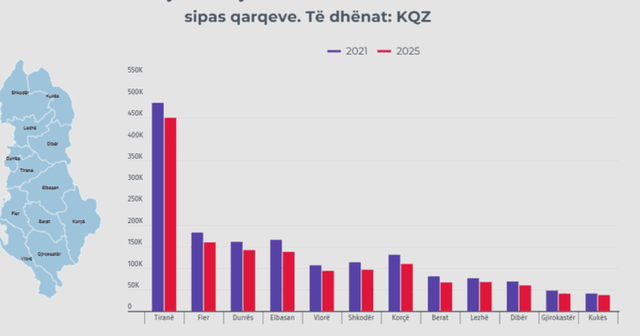
On April 28, 2025, during the electoral campaign, Prime Minister Edi Rama stopped at a rally in the village of Petrelë, Tirana, where he declared that the success of his government's management of the economy was causing many emigrants to return to their homeland.
"...the facts show that what has happened with the development of Tirana has had a very significant impact on the entire rural area and in fact, today we are here in an investment made by a couple who have returned from emigration, have returned from emigration and have made a significant investment, certainly successful, I believe, that a decade ago would have been inconceivable," he declared, according to the speech published on the Socialist Party's website.
The facts actually suggest that the picturesque village of Petrela, where a number of restaurants have long helped the population to secure a normal living, has been affected by a significant population decline, and that the couple returning from emigration, about whom Rama spoke, are likely to be an exception to the rule. Central Election Commission data analyzed by BIRN show that the number of voters in the Petrela administrative unit has fallen by 6% between 2021 and 2025. Petrela has actually seen a relatively contained decline compared to the rest of the country.
It doesn't matter if you look at rich areas or poor areas. It doesn't matter if you look at the urban areas in the center of Tirana or the informal areas on the outskirts, nor whether you look at the coastal areas, where tourism is supposed to bring prosperity, or the mountainous areas, where life is difficult. Wherever you look at the map of participation in the May 11 elections in Albania, you will notice a significant hole, the number of people who did not vote and who, most likely, did not vote because they are no longer in Albania.
The absentee voters, exactly 200,136 people or 12% of the entire voting population present in 2021, suggest that the country has faced an extraordinary wave of emigration over the past four years, a wave that seems to have eaten away at 3 percent of the population per year and that, in all likelihood, will erode the country's ability to produce goods and services and, ultimately, to pay the pensions of an increasingly large generation of elderly people.
The decline in population also seems to explain the consolidation of the Socialist Party's result, which has essentially received fewer votes within Albania and a higher percentage of valid votes than in 2021, while its policy of abusing state resources, such as public sector jobs, offers relatively stable votes against a shrinking population.
BIRN analyzed the data on turnout in the 2021 elections and the nationwide turnout in the 2025 elections, at the district and municipal levels, and separately examined turnout in the administrative units of Tirana City, Tirana Municipality, and several major cities in the country. At the district level, the decline is recorded across the country, with the strongest declines observed in the districts of Elbasan, Berat, and Korçë. Incidentally, these are also the districts where the Socialists' victory in percentage and mandates was most pronounced.
In the Berat region, which lies in central Albania in a mix of fertile plains and hills and mountains, the voting population in the May 11 elections fell to 67,000 from 80,000 in the 2021 elections. The Socialist Party lost 5,500 voters compared to four years ago but its percentage of valid votes improved slightly from 56 to 57.6%. In total, 17% of the region’s voters who participated in the elections four years ago were absent on Sunday, May 11. The municipalities of Poliçan and Skrapar, both in mountainous areas, lost 22 and 20% of their voting population respectively, while the three lowland municipalities of the region, Berat, Dimal and Kuçovë, lost between 14 and 18% of their population. The city of Berat itself counted a total of 18 thousand voters, 16% fewer than in 2021.
In Korça, at the district level, the voting population has fallen by 16% and the Socialists have lost around 3,300 votes compared to four years ago, but their victory has improved from 49 to 54%, as other parties have lost even more voters.
In the Elbasan Region, where the Socialists won 60% of the vote last Sunday, the number of voting population has dropped by 17% and the Socialists' votes themselves have shrunk by 6,000.
In Fier County, which is the second largest county in Albania, the voting population fell by 12%, but here the Socialist Party's votes increased by 5,000 more than they had been in 2021.
Other regions have similar declines in voter turnout, with the lowest decline recorded in Tirana, where “only” 7.2% of the voting population is missing from four years ago. This is the region where the Socialist Party lost 19,000 votes and where its overall result has slightly dropped from 48.7% four years ago to 48%.
Did 50,000 people leave per year?
Albania's population has been declining over the past three decades, but during the period 1989-2011, the country experienced two major migratory movements: one, from Albania abroad and the other, from the peripheral or mountainous areas towards the Western Lowlands and especially to the country's major urban centers, Tirana and Durrës. Migratory movements from rural to urban areas have also been seen in other major cities in the country such as Shkodra, where an administrative unit called "Rrethina Commune" took on a mixed urban and rural character, or the former Kënetë area in Durrës.
The 2023 Census noted that, unlike previous decades, internal population movement had practically ended and that during the decade following the 2011 Census, the main channel of demographic movement was through emigration to other countries.
The census is a process that is carried out once every ten years and, while it provides information on the state of the population at a given point in time, it offers little information about movements within the decade. Thus, while it is known that the population fell from 2.82 million in 2021 to 2.4 million in 2023, it is not possible to distinguish whether the decline was uniform from year to year or whether there were years in which the migratory wave was higher.
What the turnout data for the 2021 and 2025 parliamentary elections show is that Albania has in fact likely experienced a huge wave of emigration after 2021. While the Census suggests a population decline of 420,000 between 2011 and 2023, at an average of approximately 35,000 per year, the decline in voter turnout over the past four years suggests a population decline of over 50,000 per year. Approximately 1.66 million citizens participated in the 2021 elections and approximately 1.46 million in the 2025 elections.
The chances are that the absence of 200,000 citizens in the elections is related to their emigration and not to any increase in the rate of non-participation in the elections. And if this is the case, approximately 2% of the population, or one in every fifty citizens, have emigrated over the past four years.
Fall in the heart of Tirana
The new element in the emigration of the population, in addition to the increase in the pace of departures over the last four years, is the fact that voters in Sunday's elections are absent everywhere, including the wealthiest neighborhoods of the capital, with rare exceptions.
Detailed turnout data shows that, for example, Administrative Unit 5, which includes the former Blloku area and the Parisit commune neighborhood, saw a 6% drop in voter turnout. Neighborhood 2, which includes Qyteti Studenti and the New Bazaar area, fell by 7%, and neighborhood 3, which includes the Xhamlliku area, also fell by 7%. Unit 11, which includes Lapraka and is widely considered a poor area of the capital, fell by 11 percent, while unit 4, which includes Alliasi and the former Kinostudio, fell by 12%. Unit 6, which includes the other poor area of the former Kombinati, saw a 17% drop in voter turnout, while the former Kashar, Farkë and Dajt communes are the only ones that have seen an increase in voter turnout.
The decline has also included all rural areas of the capital, both in the hilly areas in the west and in the mountainous areas in the east, where, supposedly, the proximity to the metropolis should make life easier.
The voting population in the territory of the city of Tirana, which includes the 11 administrative units without the former municipalities, has decreased by 27 thousand people, while in the territory of the Municipality of Tirana according to the territorial division after 2015, the voting population has decreased by approximately 26 thousand people.
If data for the main cities are analyzed separately, a population decline of 9% is observed in the country's urban areas, while in the rest of the country, which includes rural areas and small towns, the decline was 14%.
The decline in population warns of poor economic performance in the coming years, signs of which have already appeared. As the rural population emigrates, the country's agricultural and livestock production decreases because, apparently, the departing population is not being replaced by agricultural machinery. INSTAT data show that the gross domestic product of the agricultural sector has been declining for four years. Likewise, it is likely that part of the decline in manufacturing, mainly clothing and footwear, a sector that is reflected in the significant decline in exports over the last four years, is also a consequence of population emigration.
Albania’s economy has grown at a significant pace in recent years, which would normally have led to population growth rather than decline. But the fact that 12% of voters apparently missed the May 11 elections also suggests that economic growth, focused on construction and tourism, has not only failed to convince many emigrants to return, but has also convinced many residents to follow the growing diaspora./ BIRN
Latest news

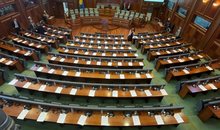
The session to constitute the Kosovo Assembly fails for the 21st time
2025-05-25 11:51:18
New details emerge from the explosion in Berat, two brothers wanted
2025-05-25 11:23:38
Last tributes to Piro Milkani, the director is being buried in Sharra today
2025-05-25 11:01:54
Foreigners pay more for rent than Germans
2025-05-25 10:41:28
Arlind Kajoshi, suspected of beating Vladimir Bruçi, arrested in Shkodra
2025-05-25 10:32:42
Attempted to kill 58-year-old man with axe in Fier, father arrested, son wanted
2025-05-25 10:05:15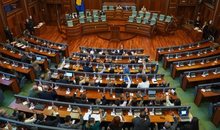

Explosion with explosives in a bar in Berat
2025-05-25 09:42:00
Private railway management
2025-05-25 09:18:32


A car caught fire on the Fier-Lushnje road
2025-05-25 08:41:45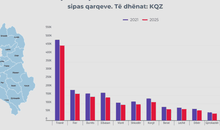
Voters who were absent in the parliamentary elections
2025-05-25 08:37:28
Weather today: Cloudy and temporary rain in some areas
2025-05-25 08:17:25
Morning Post/ In 2 lines: What mattered yesterday in Albania
2025-05-25 08:02:15
Shuhet në moshën 86-vjeçare regjisori i njohur Piro Milkani
2025-05-24 21:56:38
Kujdes nga mashtrimet online, si teknologjia nxit krimet financiare
2025-05-24 21:32:33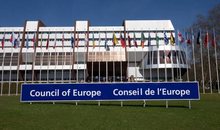

Opposition's denunciations, Xhaferri: We expect the US to listen to us
2025-05-24 20:48:06
How did PSD "capture" over 50% of the votes in rural areas?
2025-05-24 20:29:54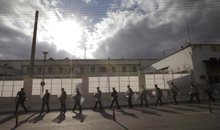
The Albanian woman with the s*x went to meet her husband in Koridalos prison
2025-05-24 20:09:15
Ancelotti says goodbye to Real Madrid in tears: I love you with all my heart!
2025-05-24 19:49:08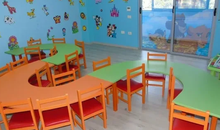
Poisoning in Gramsh, parents of children warn of protest
2025-05-24 19:21:36
Taulant Xhaka retires from football
2025-05-24 18:53:35


Incident in the north, Serbia issues arrest warrant for Kosovo police officer
2025-05-24 17:59:24

SPAK conducts inspections at Tirana Municipality, 5 phones seized
2025-05-24 17:19:23
FIFA President congratulates Egnatia on the championship title
2025-05-24 17:00:15


Boçi: The elections were annulled, the DP will continue the fight
2025-05-24 16:06:58
Man reports to police: Wife took my son and ran away, I'm asking for help
2025-05-24 15:45:55
France and Germany with a "non-paper" for Republika Srpska
2025-05-24 15:29:29

Beware of online scams! Here's how technology fuels financial crimes in Albania
2025-05-24 14:53:33

The US military "landed" in Kosovo as part of "Defender Europe 25"
2025-05-24 14:42:19








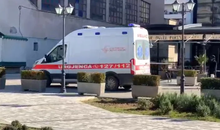
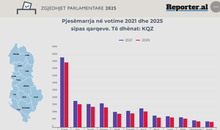
BIRN Analysis: Voters who were absent in the parliamentary elections
2025-05-24 11:19:40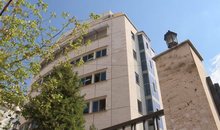



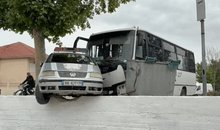
Bus collides with municipal police car in Fier, 6 injured
2025-05-24 09:25:01
Foreign exchange, May 24, 2025
2025-05-24 09:07:27

With rain and storms, get to know the weather forecast
2025-05-24 08:32:03
What do the stars have in store for you today?
2025-05-24 08:17:04
Morning Post/ In 2 lines: What mattered yesterday in Albania
2025-05-24 08:00:34




Tirana Lake Park, a campaign center for Noizy. The signatory is silent
2025-05-23 21:55:02

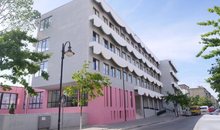

What's happening in Gaza, the struggle for survival in times of war in pictures
2025-05-23 21:02:54
DW: Germany strengthens the return of illegal migrants!
2025-05-23 20:39:57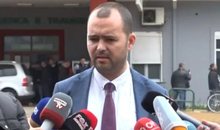


Knife attack at Hamburg train station, 12 injured
2025-05-23 19:54:58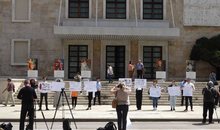
120 children go missing every year in Albania, 12 still missing in 30 years
2025-05-23 19:35:35
US court suspends order banning Harvard from admitting foreign students
2025-05-23 19:22:41
Zodiac signs that become luckiest after the third decade of life
2025-05-23 19:19:06
Igli Tare officially appointed as Milan's new Sporting Director
2025-05-23 19:01:12
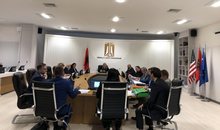



Istanbul Agreement, Ukraine and Russia exchange 800 prisoners
2025-05-23 17:54:20



Belina Pupa reacts to serious accusations in Australia for drug cultivation
2025-05-23 16:59:55

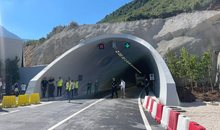
The Llogara tunnel opens tomorrow, until when will it be free of charge?
2025-05-23 16:09:31





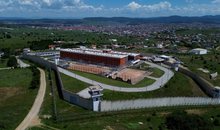
The first prisoners from Denmark are expected to arrive in Kosovo in April 2027.
2025-05-23 14:51:26
May 11/ Celibashi approves the summary tables of results for 4 districts
2025-05-23 14:50:04
Trump threatens tariffs on EU goods and iPhones
2025-05-23 14:39:47
